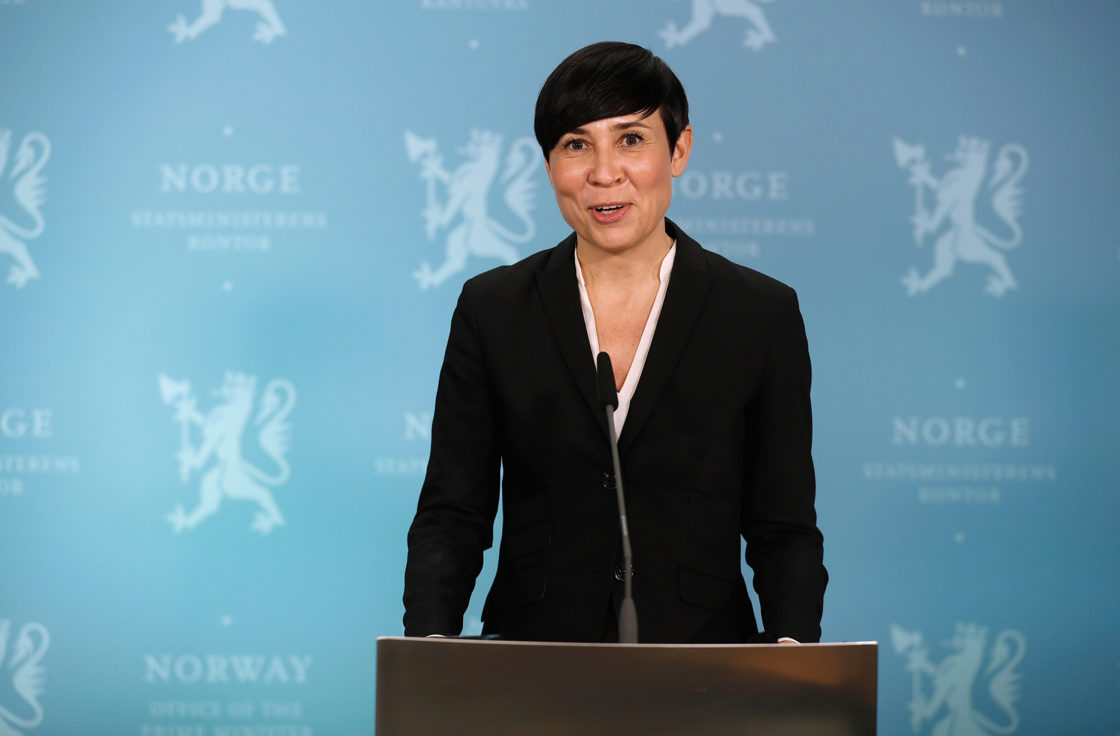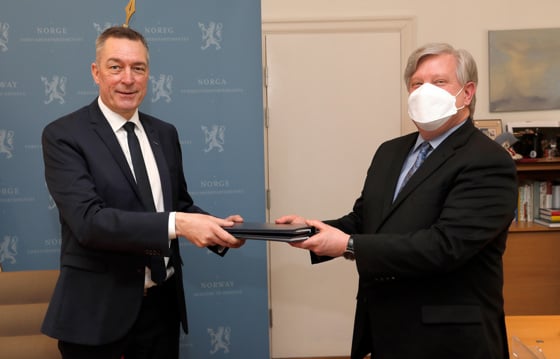“The United States of America is Norway’s most important ally, and we have shared more than 70 years of close, constructive defence cooperation. The Agreement both updates and further develops the agreements and cooperation already in place between Norway and the U. S. The Agreement will play a vital role in ensuring Norwegian security within the framework of NATO”, said Minister of Defence Frank Bakke-Jensen.
The Supplementary Defense Cooperation Agreement (SDCA) updates and regulates practical aspects of U.S. military activity in Norway, and supplements existing agreements between Norway and the U.S. The Agreement was signed today by Norway’s Minister of Defence. The Agreement must be submitted to the Storting (Norwegian parliament) for consent before it can enter into force.

‘Our cooperation with our Allies is under continuous development. The Agreement reaffirms Norway’s close relationship with the U.S. and confirms Norway’s key position on the northern flank of NATO. To ensure that Norway and our Allies can operate together in a crisis situation under difficult conditions, we must be able to hold exercises and train regularly here in Norway. The Agreement does not entail any changes to key Norwegian security policy principles. Our policies regarding the stationing of foreign forces on Norwegian territory, the stockpiling or deployment of nuclear weapons and port visits remain unchanged,’ said Minister of Foreign Affairs Ine Eriksen Søreide.

‘Norway’s defence rests on three main elements: the national defence capability, collective defence through NATO, and bilateral reinforcement plans with close allies. The ongoing development of defence cooperation with the US complements our own efforts to strengthen the capacity of the Norwegian Armed Forces,’ said Mr Bakke-Jensen.
The U.S. has entered into similar agreements with several Allied countries in Europe, to promote more predictable development of defence cooperation and ensure a robust and practical framework for providing reinforcements in the event of war or crisis.
The Agreement establishes and regulates Agreed Facilities and Areas, which are specified locations that may be used for military purposes. Under the Agreement, US forces will have unimpeded access to and use of these facilities and areas. All U.S. activities shall be conducted with full respect for the sovereignty, laws, and international legal obligations of Norway. This is how the Allied presence in Norway has been organised since the end of the Second World War. Any US military activity carried out in Norway will continue to be subject to close coordination between Norway and the US.
Under the Agreement, Agreed Facilities and Areas will be established at Rygge Military Air Station and Airfield, Sola Military Air Station and Airfield, Evenes Military Air Station and Airfield and Ramsund Naval Station. These locations have been selected with the aim of strengthening cooperation with the U.S. in the air defence and maritime domains in years to come. Infrastructure investments may be made at all four locations. Projects within Agreed Facilities and Areas will be developed in consultation with the U.S., but funding must be allocated under the U.S. defence budget before projects can be initiated. As a result, it will take some time before any planned projects are completed. Additional Agreed Facilities and Areas may be established at a later date if Norway and the U.S. agree. This will also require the approval of the Norwegian Government and the consent of the Storting.
The Agreement will be presented to the Storting in two propositions: one to request consent to ratify the Agreement and the other to propose necessary legislation to implement it in Norwegian law. Both propositions will be submitted to the Storting during the autumn 2021 session. The draft legislation and the Agreement will be circulated to the public in spring 2021, with a three-month deadline.

Facts about the Agreement:
The SDCA provides the basis for further developing Norway’s longstanding defence cooperation with the U.S. The Agreement supplements existing bilateral agreements with the U.S., as well as NATO’s Agreement between the Parties to the North Atlantic Treaty Regarding the Status of Their Forces (NATO SOFA).
The Agreement regulates and facilitates U.S. presence, training and exercises in Norway, thus facilitating rapid U.S. reinforcement of Norway in the event of crisis or war.
The Agreement covers a wide range of rules that are important for regulating practical aspects of the activities of U.S. forces, such as entry and exit, jurisdiction, exemptions from taxes and duties, the use of contractors and welfare services, and prospective investments in infrastructure.
The Agreement provides a framework for close cooperation and consultations between Norwegian and U.S. authorities regarding activities and operational and security issues. The text explicitly states that ‘nothing in this Agreement alters Norwegian policies with regard to the stationing of foreign forces on Norwegian territory, and the stockpiling or deployment of nuclear weapons on Norwegian territory.’
The Agreement introduces the concept of Agreed Facilities and Areas, which are defined as locations that are central to the development of practical defence cooperation. Agreed Facilities and Areas will be established at Rygge Military Air Station and Airfield, Sola Military Air Station and Airfield, Evenes Military Air Station and Airfield and Ramsund Naval Station. This primarily encompasses military areas, with the addition of airfield facilities such as runways and taxiways. These areas will be used jointly by Norwegian, U.S. and other Allied forces, and the U.S. may decide to provide infrastructure investments at these locations.
An extensive dialogue will be conducted with the U.S. regarding the use of Agreed Facilities and Areas, and prospective activities to be carried out there. Buildings and other infrastructure constructed and financed by the U.S. at these locations in the future will become the property of Norway, while the U.S. will have right of unimpeded access and use. It is too early to predict the costs that the Agreement will entail for Norway, but these may include costs for security measures and the hire of private land for exercises. If activities under the Agreement lead to an increase in Norwegian expenditure, this will be dealt with as part of the normal budget process.
In principle, the Agreement is open-ended, but after an initial term of ten years, it may be terminated with one year’s notice.
(MFA Norway)
